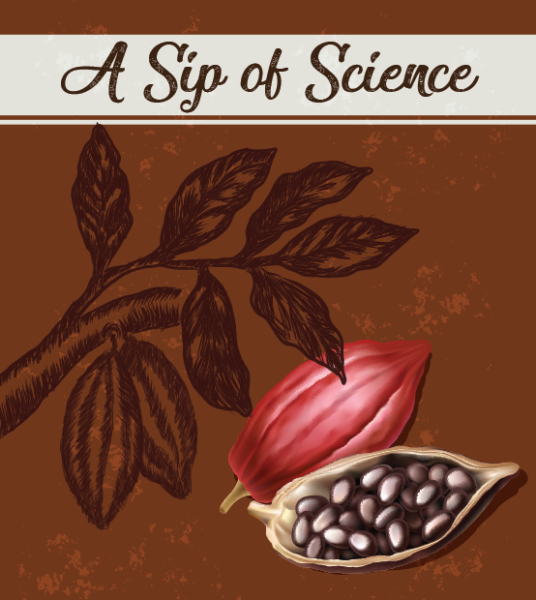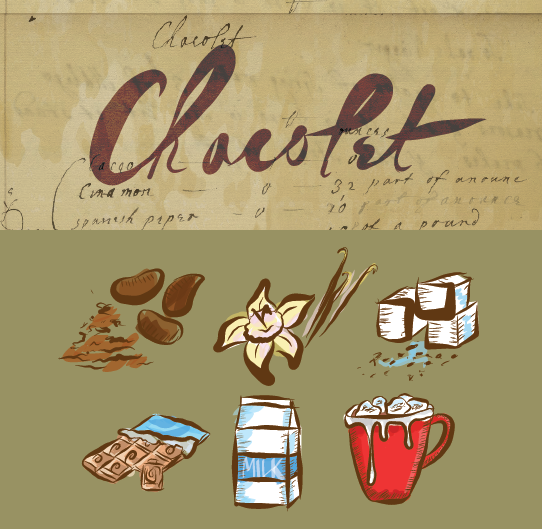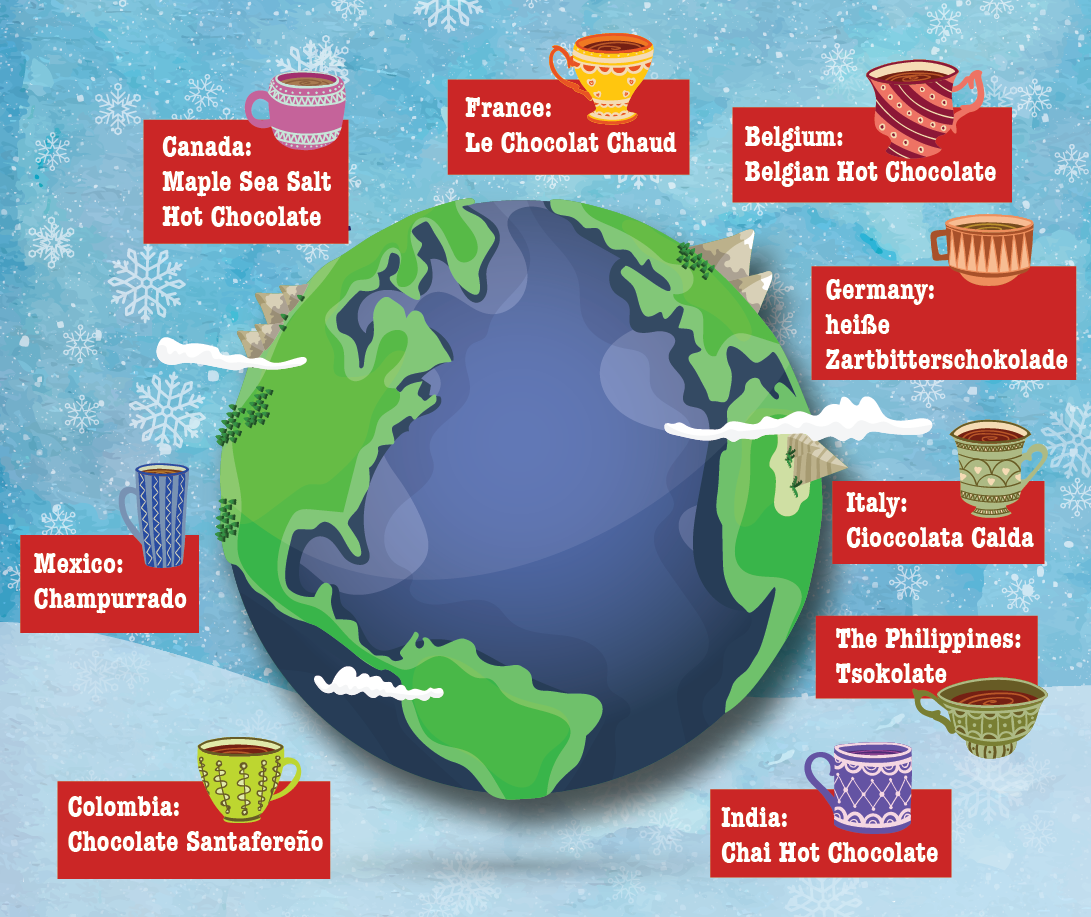The aromas and tastes of the holiday season call forth memories of traditions and of times spent with family and friends. Hot chocolate is a particularly special drink, building connections among people worldwide. We invite you to pause for a moment to consider historical, botanical, and cultural aspects of this comforting drink. We also hope you will take a moment to savor this special time of year with those you cherish.
Happy Holidays from Dean Nancy A. Gutierrez and the
Faculty and Staff of the College of Liberal Arts & Sciences
A Sip of Science
 The next time you indulge in a cup of rich hot chocolate on a frosty day, consider its botanical origins.
The next time you indulge in a cup of rich hot chocolate on a frosty day, consider its botanical origins.
Hot chocolate, and its “cousin” hot cocoa, share a common origin in the fruit of a tropical tree called Theobroma cacao – the chocolate tree. Each colorful cacao pod contains over 3 dozen cocoa beans, which are fermented, dried, and roasted to make chocolate.
A specimen of this important tree can be found in UNC Charlotte Botanical Gardens’ McMillan Greenhouse.
Learn more about the chocolate tree through the podcast “Plants We Eat,” with Botanical Gardens Director Jeff Gillman.
Chacolet
Rebeckah Winche wrote down her recipe for chacolet over 350 years ago in her handwritten recipe book, kept now in the Folger Shakespeare Library. Through digital transcription work, UNC Charlotte scholar Jennifer Munroe, her students, and collaborators worldwide are finding a treasure trove of recipes and other details of life in books written by women between the years 1550 and 1800.
 The recipe Rebeckah Winche followed took significant time and effort – toasting and grinding the cacoa nuts, beating and sieving the spices, and even waiting for 3 months before using the chacolet. The process differs dramatically from today’s recipes, yet many of the ingredients she used in 1666 are warmly familiar and still can be found in modern mugs of this favorite drink.
The recipe Rebeckah Winche followed took significant time and effort – toasting and grinding the cacoa nuts, beating and sieving the spices, and even waiting for 3 months before using the chacolet. The process differs dramatically from today’s recipes, yet many of the ingredients she used in 1666 are warmly familiar and still can be found in modern mugs of this favorite drink.
In the fragile pages of these handwritten recipe books from the 1500s-1800s, Munroe and her students find not only recipes — they also find other traces of past lives, including remedies and research. The one-of-a-kind books were seldom if ever published. Now, they and other scholars worldwide are digitizing images of each page, transcribing the vocabulary and script, and publishing the content in online databases for the world to study and share. With today’s modern focus on sustainability, the books hold fresh meaning. You can learn more about the faculty and student efforts here.
Culture
The College of Liberal Arts & Sciences focuses on educating our students to be critical and imaginative thinkers and engaged citizens for a world increasingly characterized by diversity and change.
In that context, consider all the delicious options around the world for a chocolate-inspired drink. The tasty choices serve up an opportunity to sample varied cultures. Ashli Stokes, Director of the Center for the Study of the New South and author of the book, Consuming Identity: The Role of Food in Redefining the South, reminds us that family, community, and cultural memories can be created through the sharing of food and beverages.

Here are delicious and unique options for hot chocolate from around the world. Enjoy!
- Canada: Maple Sea Salt Hot Chocolate – “add a cute, sparkly maple leaf garnish” (source: canadianliving.com)
- Mexico: Champurrado – “sweetened with sugar and spiced with cinnamon” (source: mexicanfoodjournal.com)
- Colombia: Chocolate Santafereno – “this steamy concoction features a salty, melted surprise at the bottom of the mug: white cheese” (atlasobscura.com)
- France: Le Chocolat Chaud – “an over-the-top threat: rich” (source: thespruceeats.com)
- Belgium: Belgian Hot Chocolate – “a rich chocolate flavor, extra smooth and oh so amazing!” (source: busycreatingmemories.com)
- Germany: heiße Zartbitterschokolade – “deliciously dark and decadent drink” (source: thekitchenmaus.com)
- Italy: Cioccolata Calda – “ultra-thick, almost like drinking pudding” (source: browneyedbaker)
- The Philippines: Tsokolate – “thick, frothy, with the bittersweet taste of dark chocolate and a slight graininess” (source: confessionsofachocoholic.com)
- India: Chai Hot Chocolate – “this hot, creamy, nourishing drink is protein-rich, fragrant, sweet and slightly spicy with hints of cardamom, cinnamon, fennel, ginger and more” (source: recipestonourish.com)








